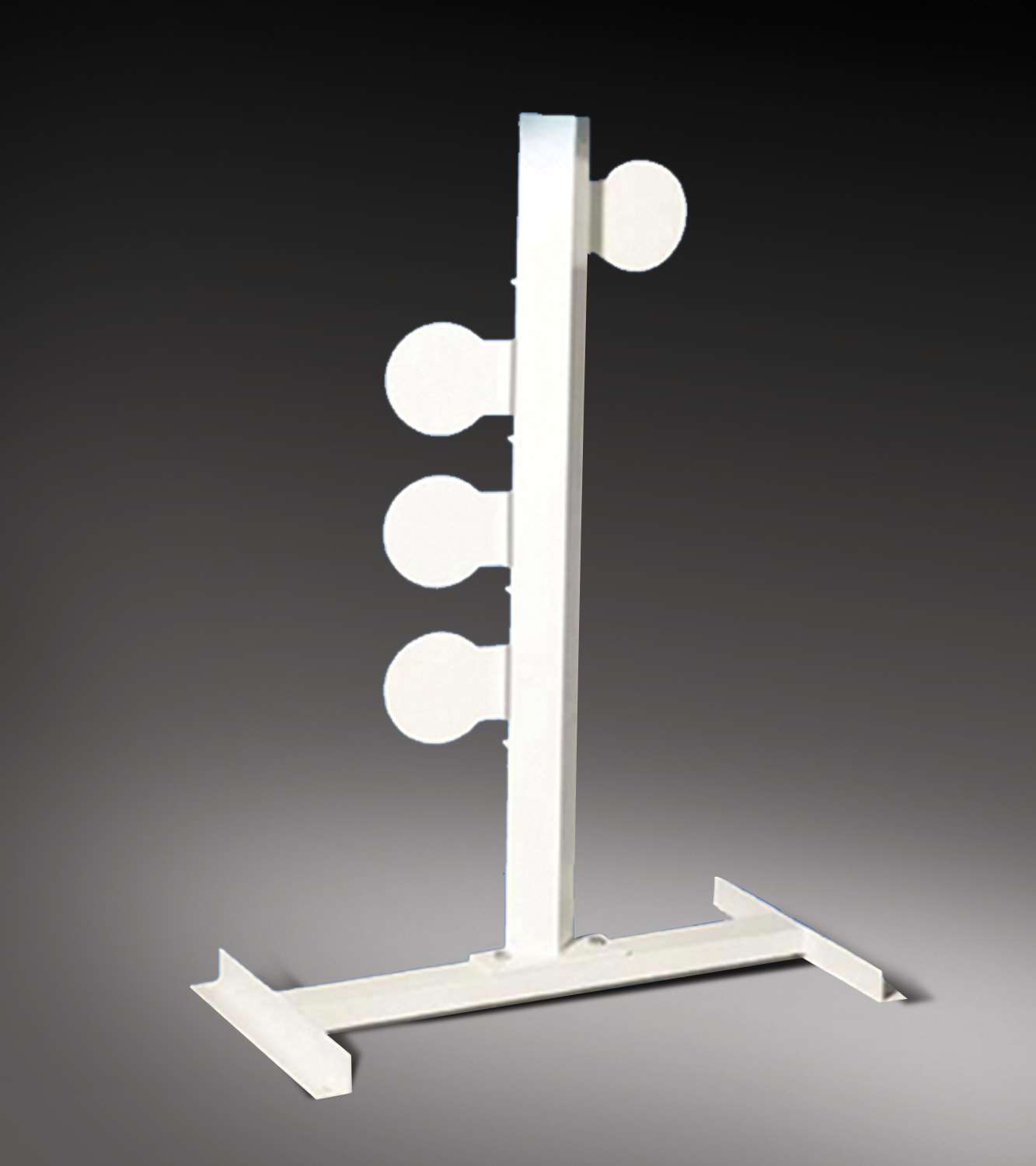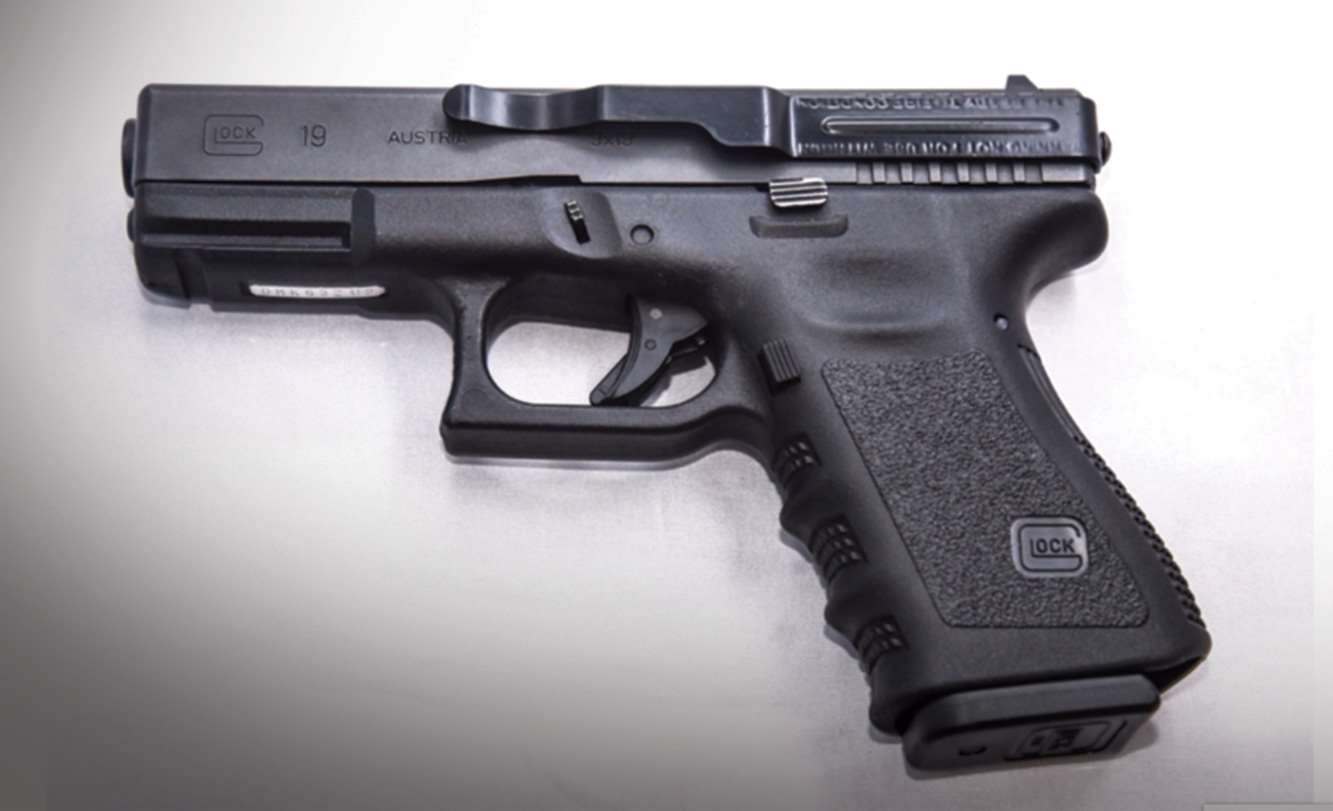
We routinely encounter laments about the expense of shooting, and this strikes us as a little unanalyzed in the sense of being an absolute sequitur. You can surely make it expensive by constantly swapping gear and disciplines in and out, but being expensive is hardly as certain as night following day. First Gear has two examples of the opposite—or at least we think we do.
The first is an all-around, if-you-make-us-choose-one favorite target technology that you can buy once. The second is a simple, reliable carry aid/technology that seems to sprout applications like a single dandelion begets a zillion, and is inexpensive yet amazingly versatile from the get-go.
MGM Dueling Trees
The folks at Mike Gibson Manufacturing don’t pretend to have invented the dueling tree, and in fact we doubt anyone knows for sure who did. Dueling trees have been around that long. What MGM can claim, however, is to make some of the best examples out there—tough (to borrow from Ford: “Job 1”), easy to assemble and reliably functioning. We’ve used all three versions—rifle, pistol (6-inch plates) and rimfire (4-inch plates)—and we haven’t been able to substantially foul one up yet, to say nothing of actually breaking anything. That’s a good start, at any rate.Not shooting by yourself, however, is where the fun really starts.
The reason we’re such fans isn’t tough to divine once you see a tree work. In the MGM versions, it’s four or six round steels mounted to a vertical support by means of an armature that allows them to flip back and forth when hit. First benefit encountered: self-resetting.
Even shooting by yourself, only two trips downrange are absolutely necessary—one to set the target, and one to retrieve it. That leads to the second benefit encountered: It’s highly efficient—more time shooting, less time messing with targets. (And when you do, it’s optional, with a can of spray paint to freshen the faces for improved target visibility. As we said, that’s utterly optional, and there’s a case to be made not to do this: It’s a more visually challenging target.)
Not shooting by yourself, however, is where the fun really starts (third benefit). Just one example: You round-count limit pairs of shooters, and simply paint one side of the plates one color, and the other side a different color. Start with half the plates on one side of the tree and half on the other. When the round count is depleted—with or without reloads—whoever has more of their color showing, loses. This works great with rifles or pistols.

Whether it’s a lunch, coffee or bragging-rights bet, have plenty of ammunition on hand. Our record is 5,800-plus rounds of rimfire in a day-an-a-half soirée, featuring two matched Ruger 10/22s at 75 yards. Feel free to trounce that. We concede here that our opening observation about cost control breaks down to some extent, but talk about a hoot! Seriously: Teenage women were elbowing each other to get to the front of the line during this affair.
Benefit four is compound, and in some ways our favorite. And several factors combine to make this an inherent advantage of the dueling tree—the propensity to randomize the shooting challenge it presents. First, natural variations by the shooter (read “misses”) mean that engagement order will routinely change. Second, difficulty can easily be increased as skill advances—just back up a step or two. Finally, so many different skills can be drilled: Draw, transitions, shooting on the move, etc., all can be practiced without adding the inefficiencies of most other target types.
Benefit five may require a little experience to fully appreciate: The dueling tree—used properly—is an extremely safe target. It has only a tiny cross-section that is inclined to reflect partial hits in a dangerous direction (upward, though these projectiles are severely compromised in the ballistic sense and rarely travel as far or fast as people suppose). Also, and as built by MGM, this combines with unstinting materials quality (3/8” AR500, 5/16” for rimfire) to smash incoming projectiles to tiny components resulting in vanishing ricochet risk. Still, use them wisely: Back ’em up against your backstop, and always wear that eye-pro (spectators, too).
Practice more, enjoy it more, pay for it only once. Point?
Contact MGM at mgmtargets.com or 888-POPPER1 (888-767-7371).
ClipDraw
We distinctly recall a lot of sniggering when the ClipDraw was introduced. Suffice it to say that, 20-plus years down the road, we expect the ClipDraw folks are having the last laugh.
Or even a continuing laugh. You know—the kind that happens when you’re right and your critics wrong? Our absolute favorite, however, is full “ambi” capture of the pistol at mid back.You won’t easily find a simpler device for discretely carrying a firearm. The original versions were Glock- and 1911-oriented, and we liked and used them for the same reason: They added no effective width whatever to either pistol type. As any gentleman or lady who carries at the waist can tell you, this is the biggest barrier to carrying at all times: The inability to fit IWB (inside the waistband) in your existing selection of trousers, pants or skirt due to the extra circumference a conventional holster invariably adds. Most folks simply won’t re-acquire a substantial percentage of their wardrobe to make this happen, and couldn’t if they wanted to: How precisely do you match the trousers that go with that perfectly good two-year-old suit? A relatively major “oh-oh,” at least.
ClipDraws dispense with that because the width they do add—the clip—is outside the waistband or pocket. Without that holster thickness (to say nothing of weight), it’s surprising how many firearms will comfortably fit into a “regular”—that is, bought and paid for—waistband/belt combo.
There are a couple of additional considerations for this very standard use of a ClipDraw. Most obvious is pistol weight. A regular waistband and belt are on the edge for supporting a roughly 40-ounce, standard, all-metal pistol, and this is the part of the job a regular holster does so well—distribution of that weight on a longer span of belt. In jeans, the difference is negligible, and we used a ClipDraw with a Colt Delta Elite for years when this was suitable attire. In suit/sport coat and business dress, our defensive wherewithal withdrew to our attaché—hardly ideal, but the structure of these garments wasn’t really up the weight, clip or holster.
When well over half a pound came off the weight of our standard carry configuration with the switch to a Glock 23, the ClipDraw really came into its own.
A second ClipDraw consideration we largely dealt with in a recent Carry Life: Don’t over lube your carry arm when using it with a ClipDraw, or dry-cleaning (if you’re lucky) or replacement cost (if you’re not) will eat you alive. A holster gives some protection here that a “minimalist” ClipDraw cannot. Still, lube on the outside of your firearm isn’t solving any problems, and should be avoided in a carry arm, period.

ClipDraws are also perhaps the best all-around way to get to manageable pocket carry too, at least for “slash” or other un-flapped pockets (cargo-style pockets are a different matter with different challenges). For starters, the clip architecture holds the firearm at the top of the pocket, which makes it considerably more accessible. Note, ladies, that this can work for purse carry also. It’s also less likely that detritus will find its way inside the muzzle or trigger guard—both potentially very bad things. (With or without a ClipDraw, remember the “golden rule” of pocket carry: Everything else comes out and stays out of that pocket before the gun goes in.) We jury-rigged a Beretta 21A for years to achieve this when nothing else would work, but you won’t have to now—the Universal Semi-Auto version fixes this in nothing flat. Nor is the Universal system just for ultra-light weights, as this shows.
But over our long association, our favorite ClipDraw applications are what you might call unconventional. An obvious for instance is our “house gun.” While it gets shot a good deal (as any defensive arm should), it almost never gets holstered. It strikes even us that a holster to accommodate this full-sized, light-equipped autoloader is a bit over-the-top for our likely VX in these environs. But when things “go bump” in the night, is it practical to have a handgun that you must keep in hand at every moment of whatever comes next? We discovered—the hard way—that the answer is an emphatic “no!”
Enter the ClipDraw. Without impeding actual use, a clip here gives you the ability to temporarily “store” the pistol at the waist from either hand. Think it through: If you’re a righty, you can hang the pistol in the waistband or either pocket (front or rear) if that right hand is needed. That right-side clip also works on the left side if you’ve transitioned the gun: It’s clipped outside of the pockets or waistband to be sure (the clip is now toward the body rather than outboard of it), but the long “capture length” of the ClipDraw clip makes this surprisingly secure. Better, for sure, than having to abandon that firearm.
Our absolute favorite, however, is full “ambi” capture of the pistol at mid back. Rather than simply jamming the pistol into waistband and trusting to luck and friction—and as movies and television so often and unwisely suggest—a ClipDraw lets you secure that firearm either IWB or OWB. Cool enough, but remember that “ambi” part: Because the ClipDraw doesn’t enforce cant as most other methods/holsters do, a slight additional reach means access is available with either hand.
OK, enough. Is it clear we think this is a darn clever, extremely affordable gizmo that solves lots of problems?
Very well then; moving on.
Contact ClipDraw at clipdraw.com.






























